French Art of the 18th Century Series of Books
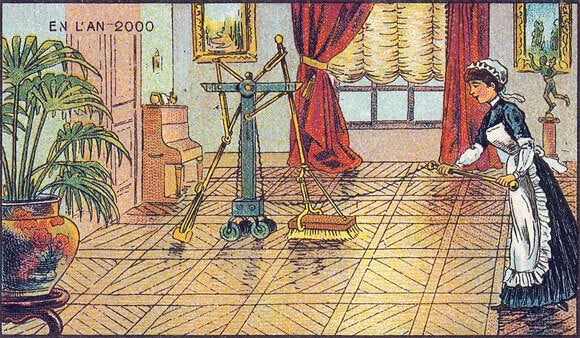
If you lot've ever struggled to imagine how life will change over the adjacent century thank you to engineering science, take comfort — you're not alone. Over 100 year agone, some French artists tried to exercise the same thing.
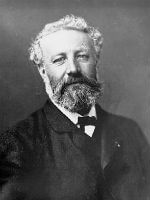
During that time, one of the most influential science fiction writers always had been busy letting his imagination run wild with all the possibilities that the age of science was opening upwardly. That writer was Jules Verne, whose collection calledVoyages Extraordinaires contained 55 novels, including the well known "twenty,000 Leagues Under The Sea" and "Around The Globe In 80 Days". He even wrote a short work imagining what life would be similar a millennium in the future called In The Year 2889.
Verne's stories were popular among the French, and their imagination swooned with the endless possibilities of the hereafter.
Starting in 1899, a commercial artist named Jean-Marc Côté and other artists were hired by a toy or cigarette manufacturer to create a series of moving-picture show cards as inserts, according to Matt Noval who writes for theSmithsonian magazine. The images were to depict how life in France would await in a century's time, no doubt heavily influenced by Verne'due south writings. Sadly, they were never actually distributed. Yet, the just known prepare of cards to be was discovered by Isaac Asimov, who wrote a volume in 1986 called "Futuredays" in which he presented the illustrations with commentary.
What's amazing about this collection is how close their predictions were in a lot of cases, and how others are shut at hand.
To begin, technological strides were made in electromagnetism and wireless communication that led to the invention of the telephone and radio during the latter decades of the 19th century. To the artists, these technologies must play an important part in the futurity, so a automobile was imagined that would transcribe spoken language into impress, something that automated audio transcription services like Dragon Dictate or voice recognition with Google Search now make possible:
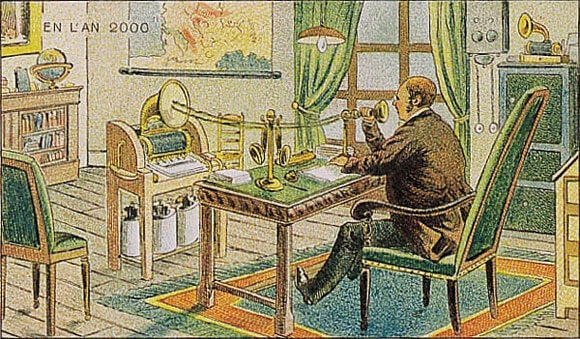
Another card shows video calls imagined from the engineering of the 24-hour interval (a projector), just functionally the same every bit Apple's FaceTime, Google Hangout, or whatsoever other standard video conferencing software:
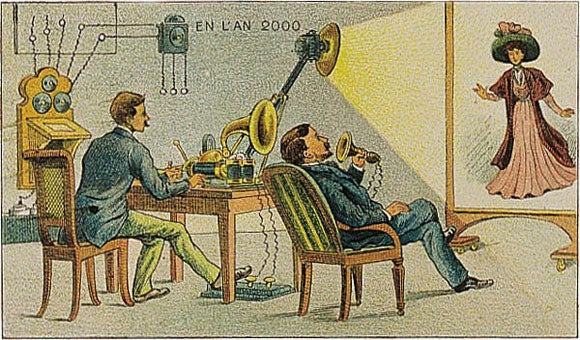
Other types of advances in projection were expected besides, allowing microscope or telescope images to be much more visible. While projection technologies like these were developed, today digital instruments and monitors are the workhorses for microscopy:
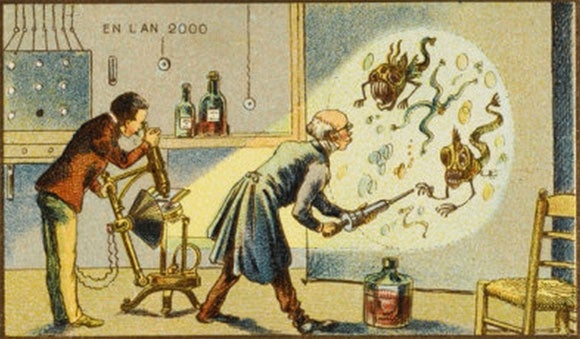
In lite of the Industrial revolution that occurred in France in the early part of the 19th century, automation would accept been rife with possibilities. Among the drove, personal automatons — or robots as nosotros telephone call them — showed up prominently. Conspicuously, the artists felt they would be a big function of the future, taking care of many of the mechanical tasks used in daily life, such equally robot barbers:
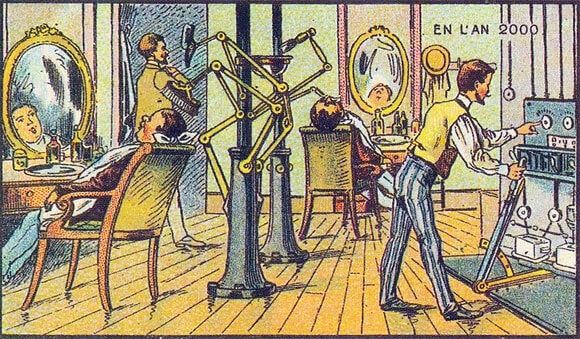
For women, the vision was more extensive, including an all-in-one robotic make-up artist and hairdresser:
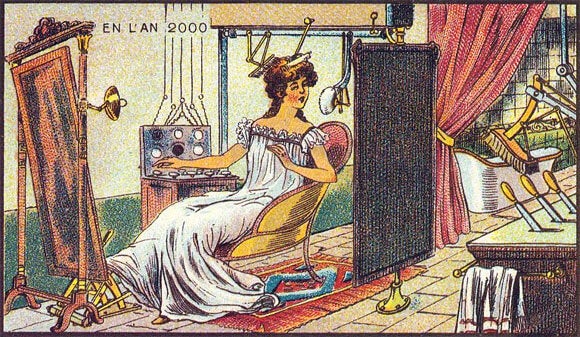
Technological advances in robotics is seriously on the move, then while we accept robots to wash hair, service bots in hospitals and cleaning bots like the Roomba to help in pocket-size ways, bots to accept care of all our personal needs are probably only years away. Whether nosotros'll take a robot that tin custom tailor clothes for us at will, as shown in the following illustration, is debatable, however:
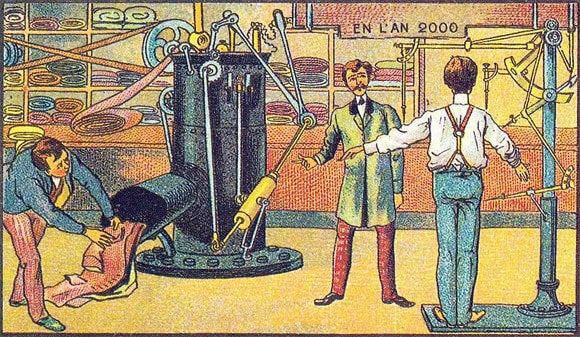
One card shows all the instruments of an orchestra being controlled by the conductor, which isn't besides far off from the robotic instruments designed by Festo:
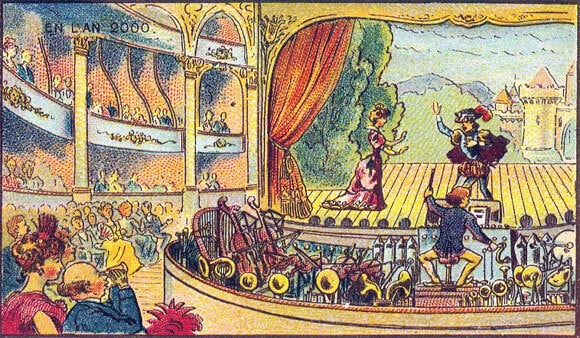
But the scope of using machines to do work wasn't seen to be limited to smaller scale activities. Why not employ machines to allow a single person to construct buildings? We aren't in that location withal, only recent advances in 3D printing almost beg for houses and other buildings to be printed out, if the technology could exist worked out.
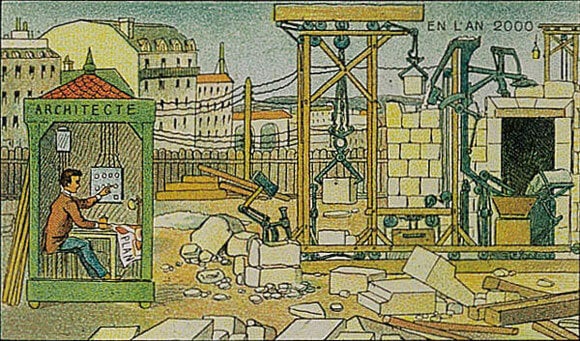
The artists likewise imagined how robots would have an even bigger impact on society, every bit in helping farmers plow fields. Robots on farms are on the rise, as bots have been developed to milk cows, pick only ripe strawberries, and fifty-fifty impale weeds.
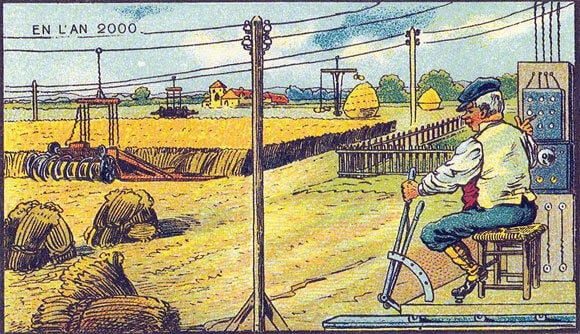
The possibilities of science must have seemed endless, and technologies that would fundamentally modify society would seem all but likely, as in one illustration that shows books beingness basis up and fed directly into the ears of schoolchildren. While information technology may seem a bit to Matrix-like to become a reality, 1 could argue that this is fundamentally what an audiobook is or what the Internet does with information. Nosotros may not exist at the betoken where information is fed directly into our brains, but reality isn't that far off.
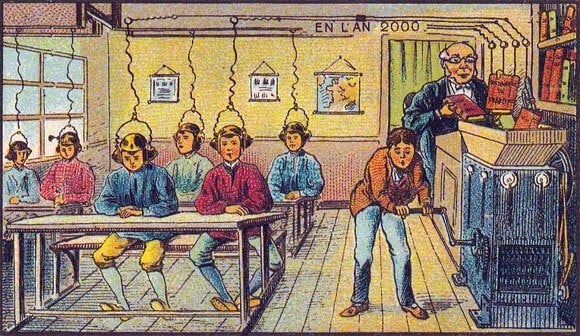
In what some French people might consider an abomination, 1 illustration depicted the mod kitchen as a place of food science. While constructed nutrient in commercial products is sadly more common today than nosotros'd like to admit (sorry Easy Cheese lovers, but I'm calling you out), the ascension of molecular gastronomy in fine dining has made food chemistry a modern reality. It may seem similar food science has its limitations, simply i but needs to consider efforts to grow meat in a laboratory to see how far technology may go.
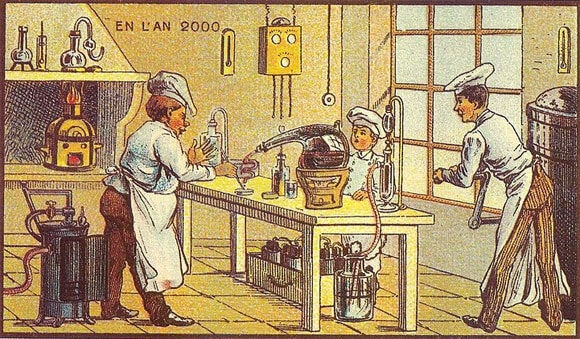
As incredible every bit it is that Côté, Villemard, and others were able to envision some of our modern technologies, one would expect more misses than hits. They are, after all, making fantastical predictions well-nigh technological progress over a century'south time, and it's challenging to exist authentic (unless you are Ray Kurzweil).
Making predictions in the shadow of Verne'due south body of work, one would take for granted that the sea and the air would be open up to all.
For instance, the artists were fascinated by the possibilities of flight. This makes sense, considering that powered gliders were in evolution during the 1890s, the first Zeppelin was being constructed in 1900, and the Wright brothers fabricated their historic flight in 1903. Just personal flying was envisioned to be much more than integrated into daily life, envisioning that wings would assist people exercise all sorts of things like delivering postal service…physics be damned!
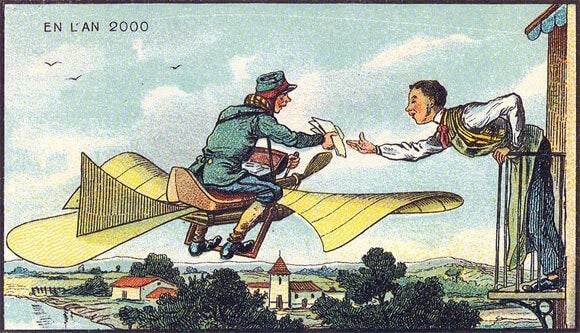
Air ship was also imagined, and though they didn't quite capture modern air travel, they weren't too far off:
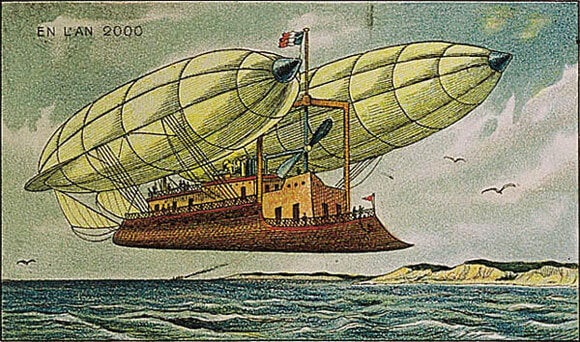
The artists too seemed to believe that people would be interacting with ocean life as a part of their daily lives, perhaps because of 20,000 Leagues Under The Sea. Everything from fish races consummate with jockeys to travelling underwater by whale were seen as inevitable. It's sad that the ocean is still such a mystery, but maybe Google's efforts to let underwater exploration in Google Maps will begin to help:
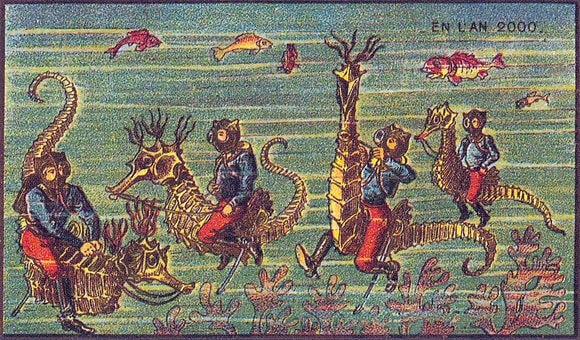
Finally, in that location are some illustrations that we wait at today and know they are bad ideas, such as rapid biological development of eggs into chicks:
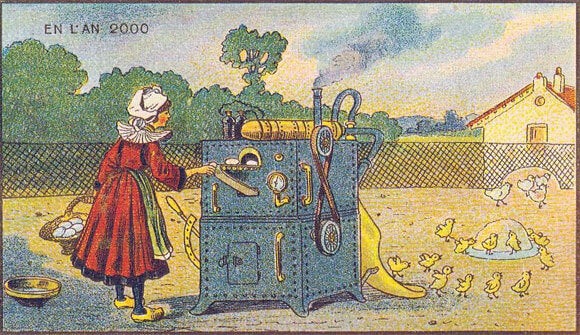
Or using radium in the fireplace to warm a business firm:
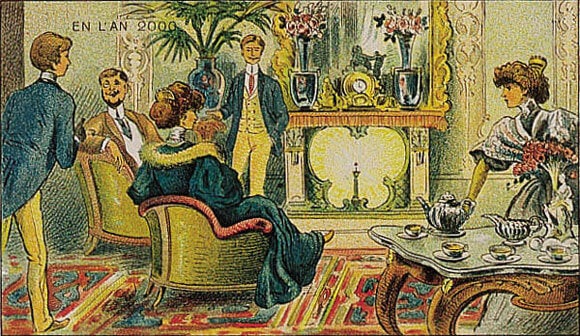
Imagining the future is vital to progress, as it means technological advances are the result of deliberate efforts to make ideas reality, rather than simply humans reacting to their environment similar animals. These illustrations are a testament to a handful of very creative artists who tried to bring a vision of the future to the masses.
How unfortunate that the people of the time never got to seem them.
Source: https://singularityhub.com/2012/10/15/19th-century-french-artists-predicted-the-world-of-the-future-in-this-series-of-postcards/
0 Response to "French Art of the 18th Century Series of Books"
Post a Comment